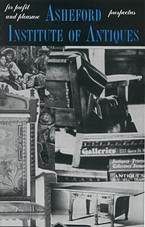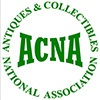 New York - For many dealers of a certain age it seems just a few scant years ago that prognosticators everywhere were signaling the death knell of the antiques business. Opinions at every turn summed up the industry's demise with a sobering prediction that old would never return. But within a few short years, a new generation of buyers and sellers had suddenly appeared, and so did the predictions. For those who remember the antiques industry in the mid-nineties, the outlook couldn't have appeared more grim - stainless steel and modern motifs were on the rise, while 'brown wood' and anything associated with the last vestiges of the Victorian era were being ditched faster than a firehouse freebie-sale. However, after witnessing a decade of declining sales and changing tastes, a funny thing happened on the way to the antique market... Millennials began to take an interest in their past. Not the far flung past mind you, but the past associated with their parents and grandparents - the funky looking Danish credenzas in the living room and starburst clocks on the kitchen walls. Little by little, the interest spread upward and outward to include '60s bean-bag chairs and '70s space-age modular furniture, until by the middle of the 21st century's second decade, millennials had completely reshaped the collectible nature of the decorative arts market. For the older antique dealer this move marked what appeared to be a renaissance of collecting, but one that was hard to track and difficult to predict. Were the market changes real, or just a fad? Was the younger generations interest in the past here to stay or just a fleeting fancy? 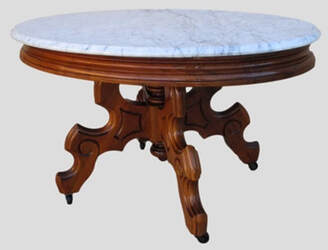 Antique Pieces Benefitted From The Overflow Antique Pieces Benefitted From The Overflow For most industry insiders the answer came around 2010 with the growing influence of massive vintage buying and selling sites such as Etsy and Bonanza. Recognizing the surging interest in collecting by the upstart millennials, many long-established dealers began to segue from period pieces to more consumer driven commercial objects from the midpoint of the 20th century onward. 'Brown' may have been out, but kitsch was in, and there was plenty of it to go around. Multi-generational dealer Susan Collier, whose parents had started their antique business in Portland during the 1970s, believes firmly that the early millennial generation not only single-handedly saved her parents business, but were also responsible for a renewed interest in authentic antiques (including brown furniture), as their search for mid-century modern and kitschy pieces also led them into rooms filled with wooden furniture from earlier periods, including the Victorian era. "At first, most of them were just looking for the vintage stuff from the 50s and 60s," says Collier, "but pretty soon they started to realize the value in picking up late Victorian pieces, which at the time we were almost giving away." Collier credits her father for anticipating the market change when he started buying up Mid-century furniture from garage sales at the turn of the century. Not all of the antique resurrection can be tied to millennial interest in the Mid-century motif though, at least according to Oliver Flynn, whose boutique interior design firm in Soho, New York, has been charting the rise and fall of decorative arts trends for almost thirty years. Flynn says his daughter, who currently manages the firm, noticed the 'repurposing' movement of antiques and vintage items beginning early in the century. "It started with the shabby chic and painted furniture trend," said Flynn, "and then progressed into areas like Steampunk and industrial." Flynn acknowledges that at first he was mortified by the changes people were making to authentic antiques, but knew it was a do-or-die proposition for the industry. "I really didn't like the fact that wonderful Victorian pieces were being painted a vibrant purple or two-tone blue, but that's what our clients wanted, and I think it saved a lot of wonderful examples from ending up on the scrap heap." Flynn's daughter believes that the millennial interest in repurposing and being environmentally friendly has also greatly helped the antique industry as a whole. "They may not be the antiques that my father remembers," she says, "but underneath all that paint, they're still there." 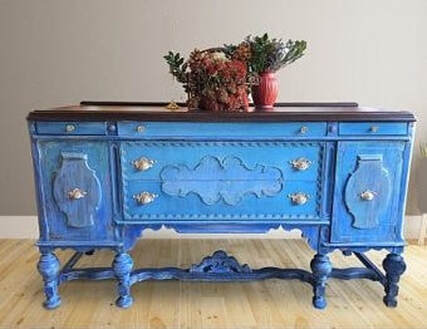 Vintage And Antique Pieces "Repurposed & Painted" Vintage And Antique Pieces "Repurposed & Painted" For Derek Jackson, who tracks decorative arts trends for Art Basel and a number of major auction houses, the proof is in the numbers. "You can literally see when the younger generation finally began to assert itself," says Jackson, who based the results of his study on online auction sites and realized sale prices. Jackson says that part of what he does is to develop algorithms that track decorative arts items coming onto the market and what they end up selling for. "There's no question there was a lull in traditional antique sales at the turn of the century," says Jackson, "but within the next ten years you could see it being replaced by the collectible and vintage stuff." What's really interesting about the numbers though, at least according to Jackson, is how traditional antiques have made a comeback with buyers who were originally simply purchasing vintage items. "I think once they started collecting, it became patently obvious that many of the older pieces were just too good of a deal to pass up." Today's vintage markets also seem to reflect a more balanced approach to stock then they did just a few short years ago. Tony D'Angelo, who's picked for dealers across the country for more than forty years, and who runs a part-time booth at the Brimfield shows, says that there was no question about what dealers wanted in the past. "Five years ago it was just MCM or vintage stuff from the 60s or 70s. Today, it's a little bit of everything, even Victorian." D'Angelo says he spends about six to eight months on the road buying and selling at shows every season, and admits that he's seen a big change over the last few years as vintage buyers search out not only the kitschy and retro pieces, but some of the older items too. "It's great to see antiques return," says D'Angelo, "before, a lot of the booths lacked any patina, but today most markets seem to have returned to a nice mix of both vintage and antiques... I'm just crossing my fingers that it stays that way!" - A.I.A. Writing Staff 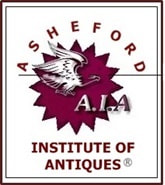 NOTE: For readers seeking more information about the Asheford Institute Of Antiques distance-learning program on professional-level appraising, the study of antiques, collectibles, vintage and mid-century modern items, please click here to visit the school's Home Page. Should you have additional questions about the Asheford program, you can also write to the school at: info@asheford.com or call the Registrar's Office toll-free at: 1-877-444-4508. |
AIA StaffWe're providing our students and reader's with the latest breaking news on events and happenings that we think might be of interest to both collectors and dealers alike. Including changes within the world of antiques, vintage, collectibles and appraising that might just have an effect on your bottom line. We're also interested in hearing from you - so if you've got a great newsworthy story, let us know, and you just might find it here! Archives
July 2024
CategoriesLegal Disclaimer: Extraneous opinions, statements and comments made by individuals represented within these posts do not necessarily reflect those of the Institute. The publication naming of specific business entities, organizations, and concerns, contained herein, in no way represents an endorsement or recommendation of services or products by the Institute. Publicly identifiable information contained herein (including, but not limited to contact information), has been intentionally limited where possible, due to privacy and legal concerns related to the digital dissemination of information through online means. All views expressed herein are those of their respective owners. The Institute is in no way responsible, financially or otherwise, for the accuracy or validity of statements contained within published posts from sources that originate and appear outside of the written and expressed views of those submitted by the Institute.
|


 RSS Feed
RSS Feed
